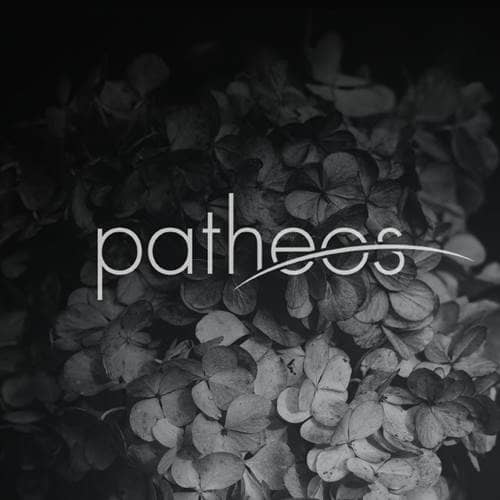- Trending:
- Pope Francis
- |
- Resurrection
- |
- Trump
- |
- Social Justice
- |
- Peace
- |
- Love
Eucharist
Variously known as "the mass, "the Lord's Supper," and "holy communion," Christian sacrament commemorating Jesus' Last Supper with his disciples.
The word "Eucharist" comes from the Greek eucharistia, meaning "thanksgiving." Other names used for this key Christian ritual are "Holy Communion," "the Lord's Supper," the "Mass," and, in Eastern churches, the "Divine Liturgy." All three Synoptic Gospels (Matthew, Mark, and Luke) as well as other early Christian texts (incl. 1 Corinthians) tell of the institution of the ritual during Christ's Last Supper with his disciples, when he gave them bread ("this is my body") and wine ("this is my blood"). The Eucharist commemorates that event. While it has been an almost universally practiced ritual throughout Christian history, this sacrament or ordinance has taken various forms among different denominations.
Controversy over the Eucharist first arose in the early Middle Ages and centered on the nature of the presence of Jesus in the Eucharist. Debate focused, in other words, on the extent to which the body and blood of Christ were actually present in (as opposed to symbolically represented by) the consecrated elements (the bread and wine, or other items used in the ritual).
By the 13th century, the doctrine of "transubstantiation" became the dominant Roman Catholic teaching. The consecration of the elements, according to this doctrine, effects a change in the "substance" of the bread and wine, while the "accidents" (the outward appearance of the elements) remains the same. This doctrine was developed in detail in the writings of the great medieval theologian, St. Thomas Aquinas. Since the Council of Trent (1562), the Mass has been viewed as a Eucharistic sacrifice. Mass is celebrated every Sunday and on major feast days. Generally, only baptized Catholics receive the Sacrament, and every Catholic is expected to receive it at least once each year.
Eastern Orthodox Churches refer to the seven sacraments as mysteries, and the Eucharist is referred to as the Divine Liturgy. A greater emphasis is placed on the invocation of the Holy Spirit upon the elements than among Roman Catholics. The communicant (the individual receiving Communion) receives a piece of consecrated, leavened bread in a spoonful of consecrated wine. After the prayer of consecration, the elements are believed to have become the body and blood of Christ, but how this happens is considered a mystery. Communicants are expected to receive the Sacrament at least four times each year.
The meaning and practice of Holy Communion was a major point of controversy during the Protestant Reformation.
Among Protestant groups, the Anglicans (usually called Episcopalians in North America) and Lutherans most closely resemble Catholics in Eucharistic theology and practice. Episcopalians refer to the Eucharist as thanksgiving. Bread and wine are used, and Christ's presence is affirmed but not explained. Communion is received every Sunday, usually by both children and adults.
Since the sixteenth century, Lutheran churches have affirmed the Real Presence of the body and blood of Christ "in, with, and under" the bread and wine, a doctrine known as consubstantiation. In other words, after the consecration, both the bread and wine and the Body and Blood of Christ coexist. Among Lutherans, emphasis is placed on Holy Communion providing a remission of sins. The ritual is celebrated on the first Sunday of the month, and children generally do not receive Communion.
Presbyterian, Congregational, and Reformed Churches follow the teachings of John Calvin, who taught a "real but spiritual presence" of the living Christ in the Eucharist. That presence, however, was to be located more in the sacramental action than in the elements, which according to Calvin are not transformed. Through the ritual action, the power or virtue of the Body and Blood of Christ is transferred to believers, a doctrine that became known as virtualism. (The Reformer Huldrych Zwingli went even further than Calvin, and insisted that the Lord's Supper was primarily a memorial rite). For these Calvin-influenced churches, Christ's body remains in heaven during the Lord's Supper, but his Spirit is in the meal, and the faithful communicant receives Christ spiritually. Most celebrate Communion monthly.
Methodist and Baptist Churches commonly refer to the Eucharist as the Lord's Supper and consider it a memorial that commemorates Jesus' death and sacrifice (though recently some Methodists and Baptists have moved toward a more sacramental interpretation of the Eucharist). Bread and grape juice are used.
Restorationist churches (incl. Disciples of Christ, Christian Churches, and Churches of Christ), like Baptists, view the meal primarily as a memorial of Christ's death. The Lord's Supper is celebrated weekly with bread and grape juice distributed to church members seated in their pews.
Latter-day Saints (Mormons) refer to the meal primarily as "the Sacrament" and celebrate the meal every Sunday. Bread and water are distributed to church members in their pews, usually by boys aged twelve or thirteen known as "deacons."
Among the many denominations who do not celebrate the Eucharist are the Society of Friends (Quakers) and the Salvation Army.
While Eucharistic prayers differ significantly among churches, they often contain thanksgiving for creation and redemption, the words of Christ spoken at the Last Supper, an invocation of the Holy Spirit, and some form of intercession for the living and the dead. In many churches, such prayers are collected in official handbooks for worship.










